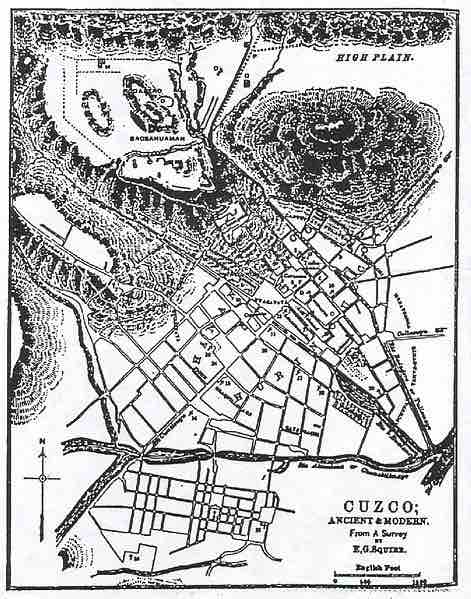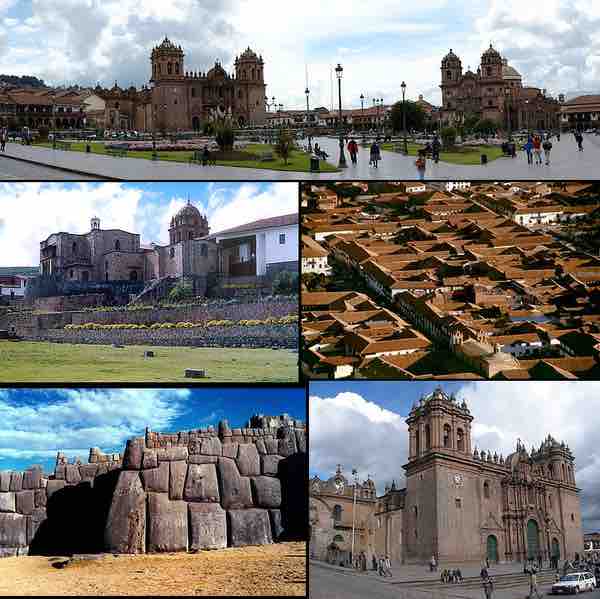Background: The Inca Empire
The Inca Empire was the largest empire in pre-Columbian America. The civilization arose from the highlands of Peru sometime in the early 13th century, and the administrative, political, and military center of the empire was located in Cusco in modern-day Peru. Its last stronghold was conquered by the Spanish in 1572.
Incan architecture is the most significant pre-Columbian architecture in South America. The Incas inherited an architectural legacy from Tiwanaku, founded in the 2nd century BCE in present-day Bolivia. The capital of the Inca empire, Cusco, still contains many fine examples of Inca architecture, although many walls of Inca masonry have been incorporated into Spanish Colonial structures. The famous royal estate of Machu Picchu Pikchu) is a surviving example of Inca architecture; other significant sites include Saksaywaman and Ollantaytambo. The Incas also developed an extensive road system spanning most of the western length of the continent.
The City of Cusco
The Kingdom of Cusco was a small city-state in the Inca empire. Scholars have established that the Inca did not occupy the area—previously inhabited by the indigenous people of the Killke culture—until after 1200 CE, under the leadership of Manco Cápac. The Inca empire was divided into four suyus (regions) that met at the capital of Cuzco, which served as the preeminent center of politics and religion. The Inca created the city of Cuzco in the shape of a puma, a shape still visible in modern aerial photographs.

A map of Cuzco, by E.G. Squier, c. 1860.
The puma shape of the city of Cusco is discernible, with the head at the upper left and the tail at the lower right.
Pizarro, the Spanish explorer and conquistador, sacked much of the city in 1535 during the Spanish invasion and built a new city over pre-colonial foundations. Because of its antiquity and importance, the center of the city retains many buildings, plazas, and streets from both pre-colonial and colonial periods. Remains of the Palace of the Incas, the Temple of the Sun, and the Temple of the Virgins of the Sun still stand. In some cases, the Inca buildings and foundations have proved to be stronger than the foundations built in present-day Peru.
Characteristics of Inca Architecture
Inca architecture is widely known for its fine masonry, which features precisely cut and shaped stones closely fitted without mortar ("dry"). However, despite this fame, most Inca buildings were actually made out of fieldstones or semi-worked stone blocks and dirt set in mortar; adobe walls were also quite common, usually laid over stone foundations. The material used in Inca buildings depended on the region; for instance, in the coast they used large rectangular adobe blocks, while in the Andes they used local stones.
The most common shape in Inca architecture was the rectangular building without any internal walls and roofed with wooden beams and thatch. There were several variations of this basic design, including gabled roofs, rooms with one or two of the long sides opened, and rooms that shared a long wall. Rectangular buildings were used for quite different functions in almost all Inca buildings, from humble houses to palaces and temples. Even so, there are some examples of curved walls on Inca buildings, mostly in regions outside the central area of the empire. Two-story buildings were infrequent; when they were built, the second floor was accessed from the outside via a stairway or high terrain rather than from the first floor. Wall apertures—including doors, niches, and windows—usually had a trapezoidal shape; they could be fitted with double or triple jambs as a form of ornamentation. Other kinds of decoration were scarce; some walls were painted or adorned with metal plaques, and in rare cases walls were sculpted with small animals or geometric patterns.
The most common composite form in Inca architecture was the kancha, a rectangular enclosure housing three or more rectangular buildings placed symmetrically around a central courtyard. Kancha units served widely different purposes as they formed the basis of simple dwellings as well as of temples and palaces; furthermore, several kancha could be grouped together to form blocks in Inca settlements. A testimony of the importance of these compounds in Inca architecture is that the central part of the Inca capital of Cusco consisted of large kancha, including Qurikancha and the Inca palaces. The best preserved examples of kancha are found at Ollantaytambo, an Inca settlement located along the Urubamba River.
Machu Picchu
Machu Picchu is a 15th-century Inca citadel situated on a mountain ridge 7,970 feet above sea level. It is located in the Cusco region above the Sacred Valley, which is 50 miles northwest of Cuzco. Most archaeologists believe that Machu Picchu was built as an estate for the Inca emperor Pachacuti (1438–1472). Often mistakenly referred to as the "Lost City of the Incas" (a title more accurately applied to Vilcabamba), it is the most familiar icon of Inca civilization. The Incas built the estate around 1450 but abandoned it a century later at the time of the Spanish Conquest. Although known locally, it was not known to the Spanish during the colonial period and remained unknown to the outside world until American historian Hiram Bingham brought it to international attention in 1911.
Machu Picchu was built in the classical Inca style, with polished dry-stone walls. Its three primary structures are the Inti Watana, the Temple of the Sun, and the Room of the Three Windows. Most of the outlying buildings have been reconstructed in order to give tourists a better idea of how they originally appeared.
The site is roughly divided into an urban sector and an agricultural sector, and into an upper town and a lower town. The temples are in the upper town, while the warehouses are in the lower. The architecture is adapted to the mountains: approximately 200 buildings are arranged on wide parallel terraces around an east-west central square, and he various compounds are long and narrow in order to exploit the terrain. Sophisticated channeling systems provided irrigation for the fields. Stone stairways set in the walls allowed access to the different levels across the site. The eastern section of the city is thought to have been residential, and the western section, separated by the square, is believed to have been for religious and ceremonial purposes. This western section contains the Torreón, a massive tower which may have been used as an observatory.
Machu Picchu
Machu Picchu is a 15th-century Inca citadel situated on a mountain ridge 7,970 feet above sea level.
Spanish Architecture After the Conquest
After the conquest and the destruction of the city of Cusco, the Spanish built new structures over much of the Inca architecture. Some of the most noteworthy architectural sights in Cusco include the following:
- The Coricancha ("Golden Temple" or "Temple of the Sun," named for the gold plates covering its walls) was the most important sanctuary dedicated to the Inti (the Sun God) during the Inca Empire. Over the foundation of the Coricancha, Spanish colonists built the Convent of Santo Domingo in the Renaissance style. The Convent exceeds the height of many other buildings in the city.
- The Barrio de San Blas neighborhood includes houses built over Incan foundations, along with the oldest parish church in Cuzco. The church, built in 1563, houses a carved wooden pulpit that is considered the epitome of colonial era woodwork in the city.
- The Convent and Church of la Mercad, founded in 1536, was a Spanish complex that was destroyed in an earthquake in 1650 and rebuilt in 1675. Modeling the Baroque Renaissance style, it contains choir stalls, paintings, and wood carvings from the colonial era.
- The Spanish Cathedral of Santo Domingo was built in phases between 1539 and 1664 on the foundations of the Inca Palace of Viracocha. The cathedral presents late-Gothic, Baroque, and Plateresque interiors. It also has a strong example of colonial goldwork and wood carving. It is well known for a Cusco School painting of the Last Supper depicting Jesus and the twelve apostles feasting on guinea pig, a traditional Andean delicacy.
- The Plaza de Armas, known as the "Square of the warrior" in the Inca era, has been the scene of several important events in the history of this city, such as Pizarro's proclamation of conquest over the city and the scene of the death of Túpac Amaru II, the indigenous leader of the resistance. The Spanish built stone arcades around the plaza which endure to this day.
- La Iglesia de la Compaña de Jesus was built by the Jesuits over the foundations of the palace of the Inca ruler Huayna Capac. It is considered one of the best examples of the colonial baroque style in the Americas. Its façade is carved in stone, and its main altar is made of carved wood covered with gold leaf.

Images of Cuzco
Top: Plaza de Armas; middle left: Temple of Coricancha; middle right: aerial view of Cusco; bottom left: Sacsayhuamán; bottom right: Cathedral of Cusco